Intro Note: It has been a long time since I wrote anything for this Into the Forest series. Part of the reason for this is that I am back at work and don’t have as much time. The other reason is that this entry was quite challenging to write, but I think it gets closer to the essence of what I have been trying to communicate with the whole blog series. Some of the image colours have been heightened or reduced to reflect the vision I’m trying to communicate. Enjoy!
Early in Christopher Nolan’s wonderfully layered film, Interstellar, a young girl and her father stare at a mysterious formation of dust that has gathered on the wooden floor of her bedroom. To them, the pattern is so unusual that it appears to be a signal; it sparks a journey of discovery and eventually forms the crux upon which the film’s extraordinary revelations- pertaining to time, space and cross dimensional communication- pivot.
‘You wanna clean that up…when you’ve finished praying to it?’, says Donald, the weary grandfather. He is more preoccupied with the welfare of his grandchildren than deciphering signals on the floor, especially as the dust storms are evidence of climate breakdown is accelerating in front of them.
But it’s such a marvellously pithy line: it seems to encapsulate so much of how rational thought has led us to be dismissive of what we cannot observe or understand; how we have grown to automatically attach whatever is non-verifiable to mysticism, spirituality, faith or religion.
That is what attracted me to the work of Ursula Beiman and her Forest Mind project. Her work has often been compared to that of the anthropologist, Eduardo Kohn, because both Kohn and Beiman have explored ideas of consciousness and sentience in non-human Amazonian life forces. They seek to bridge the gap between the verifiable and the ineffable.
Whereas Kohn explored wild living beyond the human in ‘How Forest’s Think’, using indigenous frameworks for understanding the transference of life forces in the Amazonian forests of Ecuador, Ursula Biemann’s Forest Mind project explores the connection between vegetal intelligence and an ‘overall lifeforce’ in the Amazon region of southern Colombia.
Separation
Beiman argues that the western relationship with the living world is so overwhelmingly underpinned by what we consider science, and with observation and judgement as core tenets of that, that we continually (albeit unconsciously) separate ourselves from it. This was epitomised in the first western encounters with Amazonian life: expeditions that were either scientific endeavours of observation and documentation, or religious missionaries that attempted to convert the people that they found into Christians. The process of interpretation involved considerable modification.
Spirituality in western culture was then, as it is now, inherently otherworldly. Whether through organised religion or otherwise, any mention of the spirit seems to connote a world other than our lived reality. It is this separation that has long formed a fundamental fissure between Western, or European-origin cultures, and others.
As Beiman, Kohn and others explain, most indigenous Amazonian cultures share an understanding of reality that connects conscious living to the spirit, encapsulated under a broader understanding of what is the overall life force. A somewhat crude explanation of this is that we- humans, animals, plants, trees- are all part of, and imbued with, this ‘life force’ and that fact makes the transference of energy, and in some cases consciousness, possible across the life force. According to various interpretations of indigenous thought in the Amazon, the human, animal, and vegetal spirit of all is in constant communication with life, or a fundamental life-force, which is at the centre of what constitutes our reality.
There are mainstream contemporary bridges in Western culture-books and films such as Avatar and Disney’s Pocahontas that have attempted to provide very basic translations of this concept, but they are still most often considered entertainment or novelty. Our exoticisation of non-western cultures creates further barriers to genuine understanding but it’s not just that; it is the overwhelming force of our own cultural experience that serves to suppress our ability to understand alternative conceptions of reality.

For Bieman, the strength of western conceptions of science is so dominant in those of us who have grown up in the West, it requires a conscious effort to disentangle our understanding of these principles in order to transcend them; that is, we can’t begin to truly understand an alternative ontology (beyond an anthropological approach) until we take more significant steps to put our preconceptions of the natural world aside.
If we begin with conceiving our approach to the natural world as an encounter rather than observance and understanding, Beiman believes that we can open the doors of connection more meaningfully. This is an appropriate initial preparation for connecting with the forest through ‘The Plant’, or Ayahuasca as most people know it.
The Plant
Ayahuasca, a boiled mixture of liana and leaf, is a psychoactive tool that has been used by a broad spectrum of indigenous peoples across the Amazon for many years. Like any powerful hallucinogen, it can be dangerous and is open to commercialisation and exploitation. The growth of large retreat centres in the Peruvian Amazon, run by, and predominantly attended by wealthy North Americans, is a clear example of how indigenous practices are not immune to the pernicious tendrils of capitalism.
But ayahuasca remains sacred for many people across the Amazon basin, not least because the strength of its effect is believed to offer a gateway to the forest and the broader cosmos.
Because of its profound effects on the mind and the extraordinary revelations that it can provoke, ‘the Plant’ is considered by many to be unique in its capacity for spiritual connection and even divination.
For people coming from cultures outside of the Amazon, the attraction of ayahuasca may be falsely predicated on a ‘high’. For most who take the drink, the experience that follows is anything but a high and instead involves a slow diminishing of ordinary perception and reasoning, often culminating in vomiting and almost complete dissolution of reality. The core of this experience is a feeling of dying and separation from the body; it can be terrifying but also uniquely rewarding, because of this perceived passing through a death state and experiencing a type of ‘rebirth’.
The need for Self-Transcendence
Looking in the mirror can be a jarring experience, for me at least. The concept of Sonder - the realisation that each random passerby is living a life as vivid and complex as your own- is popular at the moment, and it can indeed be disconcerting when we think about it, but I often find the reflection on my own subjectivity equally unsettling.
Sometimes, when I see myself in the mirror, I can’t help but think how the external facets of my being- my physical appearance, my name, my voice- don’t align with how I feel; how I believe I experience the world. No doubt, this experience is even more profound for Trans people, or those with other deep clashes between their appearance and their identity. But my shock in reflection, I think, is largely due to my human appearance- the idea that the essence of my being can be represented in a cohesive physical form.
In the early 2000s, there was an arts variety programme on Irish TV called The View. I remember the writer, Manchán Mangan reviewing a film called ‘Le Quattro Volte’, and he spoke so matter of factly about all of us being made of organic matter: the fact that our bodies digest, transform and assemble organic matter to form a physical appearance should mean that metempsychosis- the transmigration of the soul (and by extension, consciousness) should perhaps not be so alien a concept to grasp.
I never saw the film, and I’ve no doubt that I would have been too young to grasp it, but that sentiment stuck with me for many years; it was a comforting reflection on the cycle of life in a world that views birth life and death on a linear spectrum. I was heartened to read an interview with Manchán recently where he described holding on to this sentiment in the face of his recent cancer diagnosis.
Moving around the face of time
In early 2023, on another lazy Saturday morning in Liberties, I ambled into Marrowbone books on the Coomb. It’s a small second-hand book shop, invariably staffed by arts and English literature students, a place where the staff and books are well-read, where the stories have stories. Normally, I gravitate towards the photography section, hoping to find hidden gems documenting Dublin in the rare old times, but that morning my eyes were drawn to a paperback next to the counter.
‘Amazon Beaming’, by Petru Popescu. I had never heard of either the book or the author, but for some reason I was drawn to it.
The book documents the experience of a National Geographic photographer, Loren McIntyre when he travelled with the Mayoruna tribe of the north-western Amazon in 1970. Perhaps, more than any other book, it has changed my life.
And I’m not alone in that respect. It was enthusiastically received and eventually turned into a one-person stage show. However, it is best known for its sensational central thread. The book contains an astounding, audacious claim: that at one stage McIntyre communicated telepathically with a shaman of the group that kidnapped him. For me however, the more compelling aspect, the tribe’s conception of time and their journey through it, was drowned out by this more dramatic facet of his experience.
While kidnapped (or taken in, the process is unclear to everybody), McIntyre is taken on an arduous journey through the forest with the tribe. They regularly move camp and burn their makeshift dwellings, before walking many miles to the next and starting over. It’s a long process during which the explorer experiences a slow dissolution of reality and an experience of his ‘brain becoming the forest and the forest becoming his brain’.
He cannot understand the tribe’s determination to go through such prolonged suffering, until the journey culminates in a night of ritual dancing and ingestion of a hallucinogenic manioc mixture. This, he concludes, partially through apparent telekinesis, is a process of burning the past, going back to the beginning through starting a new cycle of time.
This process is facilitated by the tribe’s approaches to time and consciousness; approaches that are essentially flipped in the western mind. Time in the western conception is fixed and flows in one direction. Consciousness is subjective and located in the mind of the individual. In contrast, the Mayoruna approach to time is malleable, and since consciousness may be diffused across different organisms, a collective consciousness can approach time with intention. Faced with the unbearable reality of their circumstance- encroaching colonisation, disease and destruction- the Mayoruna decide to journey back to ‘the beginning’, to reset their reality.
It’s a truly fantastic story and McIntyre was famously reluctant to share it. He was a prolific writer but chose not to write or even speak about his experience with the Mayoruna for almost 20 years, and when he did, he chose another author to tell it. He realised that the claims of his story might be considered laughable, that they wouldn’t do justice to the true intention of the people who took him in, or that the true essence of the revelations would be missed. In the years since it was published however, the story has not only become more attractive, but it has also become more plausible.
The total horizon of the forest
I think about Carlo Rovelli, Brian Cox, and other astrophysicists that have attempted to reframe our conception of time; how I have never been smart or brave enough to understand that. But maybe I am also culturally not well located to understand it.
The experience of the Mayoruna and other Amazonian tribes is far more conductive to a cyclical understanding of concepts: their everyday life is entirely dependent on cycles and other life-forces that are observably cyclical- rivers, elements, the sun and perhaps most significantly, plants.
They experience what McIntyre terms, ‘The Total Horizon of the Forest’, where the forest is all the Mayoruna can see, and reality is governed by that complete parameter: this goes from fundamentals such as light, shelter, water and food, to other aspects of everyday life such as using plants for medicine, contraceptives, and recreation.
When I went on forest walks in various parts of the Amazon, I was always astonished by the guide’s familiarity with what seemed to be all aspects of vegetal life; how fortunate the people of the region were to learn not only through reading and listening, but through touch and smell and taste and feeling. When your relations with the forest are so intimate, and you are so dependent on it for all aspects of life, the ideas of diffused consciousness across the forest, and the intentionality of vegetal intelligence, become more real, and more realisable.
Forest Physics
At one stage in Amazon Beaming, in a particularly on the nose metaphor, McIntyre wakes to find his wrist watch smashed. This event lays the foundations of his own journey, his understanding that the Tribe is attempting to ‘Move around the face of time’: to step outside of their contemporary experience, which was threatened by colonial encroachers, and reframe the parameters of their existence. The critical sentence that McIntyre believes he hears telepathically is ‘we are going to the beginning.’
It is a sensational thesis, that our consciousness can move through time not with advanced technology and equations, but through a return to basic forms of thought conception. Yet, this re-conception also seems to closely mirror the post-Einstein approaches to spacetime, such as Carlo Roveli’s own proposition of ‘time as an illusion.’
Similarly, the idea of communicating thoughts across a life-force of energy might be considered bonkers by most, but in the time since McIntyre’s story was published, we have become aware of some incredible examples of vegetal intelligence and diffused consciousness.
The work of Susan Simard has shown us how trees communicate with each other and even sustain each other. ‘Other Minds’ by Peter Godfrey-Smith described how the neural network of Octopuses was not concentrated in one particular organ, like other mammals, but was diffused across their entire body, opening the door for wider conceptions of diffused consciousness.
I think about other remarkable phenomena that might otherwise be considered unbelievable if they weren’t verifiable: what about photosynthesis? Or birth? What about consciousness itself? If we weren’t familiar with these phenomena before, how different would they be to us to magic?
When it comes to theories of space-time, despite the remarkable scientific progress that has taken place since Einstein’s Theory of Relativity, we are still bound by central, unanswerable or seemingly unverifiable questions: if the universe is not infinite, and time is not endless, but must be considered in another way, then the true answers to those questions will be mind-blowing. Similarly, if the universe is infinite and time is endless, that will be equally astounding, and perhaps still inconceivable to the human mind.
In the face of this, alternative conceptions of our relation to time can not only be comforting, but reasonably considered of similar believability and worth.
In Interstellar, the central facet of the film is not really time travel but communication across time: the protagonist harnesses the force of gravity to communicate a message to his past self from a fifth dimension. Christopher Nolan, the film’s director, is rarely accused of being overly sentimental in his approach to filmmaking, but he does lean briefly into the notion that human connection, or love, is a powerful, also inexplicable motivational force in the universe.
Returning to the forest
This string of experiences- books like Amazon Beaming and Forest Mind, films such as Interstellar and perhaps most importantly, conversations with people in the Amazon region, have helped to crystallise a position of relative optimism for me that I did not have before.
It goes like this: if you are both informed and open enough in your conception of the universe and some of the most terrifying aspects of it, perhaps the most healthy option is to lean into the hopeful mystery, rather than the unyielding abyss. It is a thought that goes some way to sustaining me, particularly in these last two years of such horror around the world.
Our collective fate may still be ‘ashes to ashes, dust to dust’, but is it not more attractive prospect to conceive of this as a return to the ground, to organic matter? And as we learn more about the extraordinary capacities of vegetal intelligence- the ability of non-human life to experience the world- perhaps the Amazonian approach of a broader connected life force is more fitting than our artificially segmented Western approach to life.
At one point in his journey with the Mayoruna, McIntyre describes how his perception of reality is being eroded by their struggle through the jungle. He is exhausted and famished, and the vines that he squeezes for water may contain a mild hallucinogen. Participation in the tribe’s extended ritual has depleted him and he worries about the life-threatening parasites he may have picked up from the river.
He feels that he may be losing his grip on reality, but when he retreats further into the forest, the rustling of the leaves in the canopy takes on a musical tone.
Listening again to the sounds of the jungle, he suddenly falls into a state of tranquillity when he surrenders to the forest.
‘It’s singing’, he says, ‘My wonderful prison is singing.’






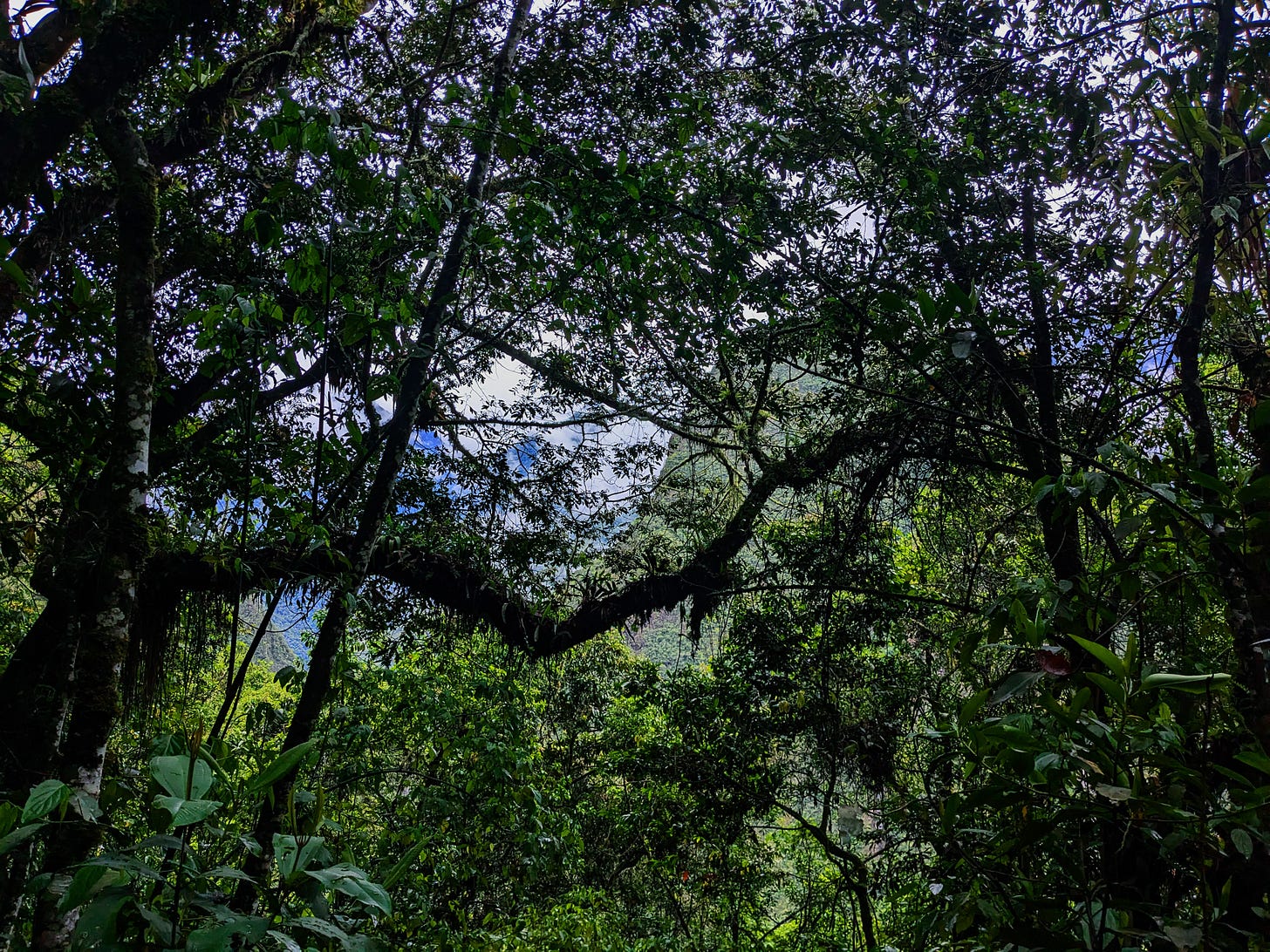


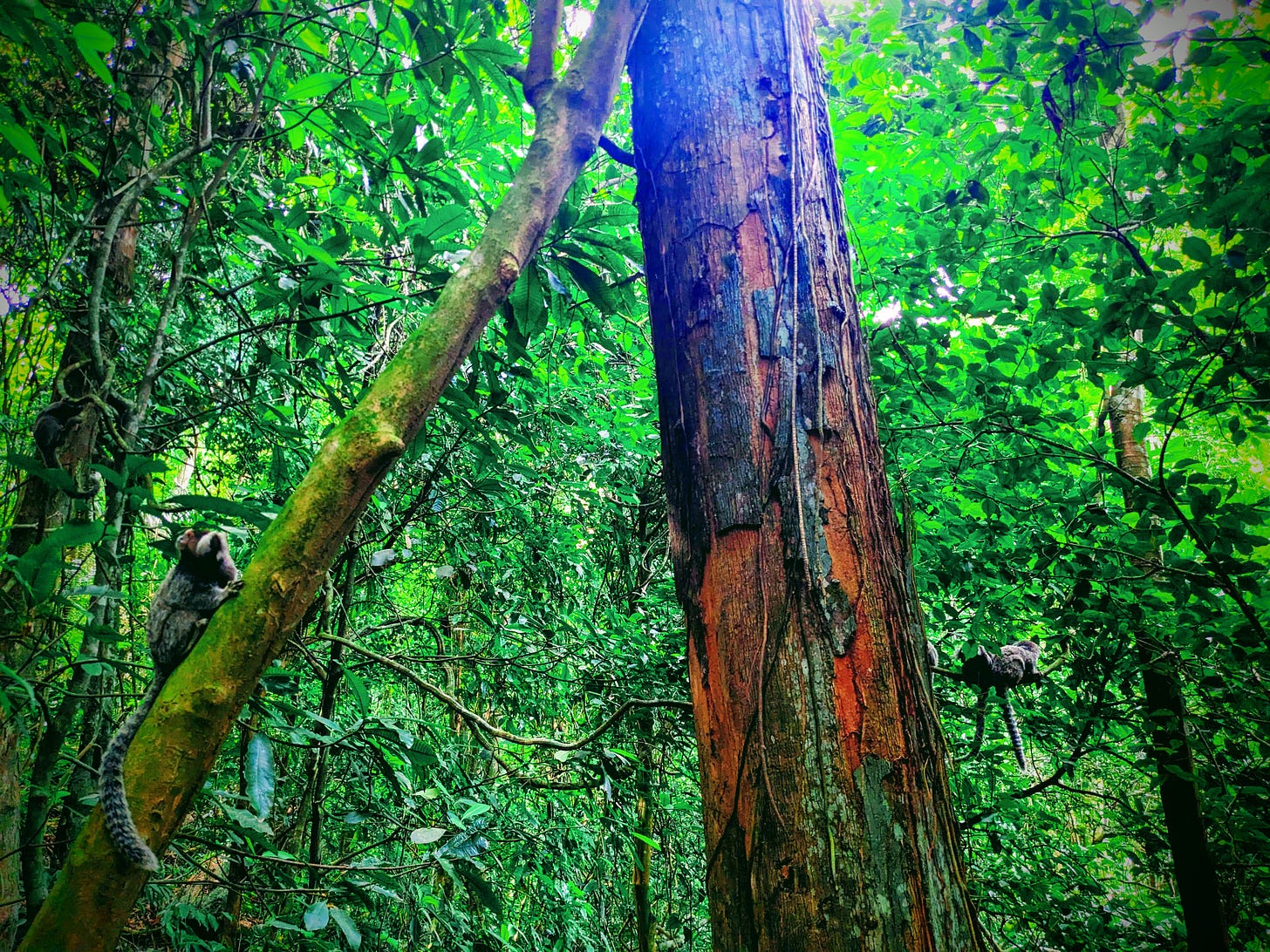
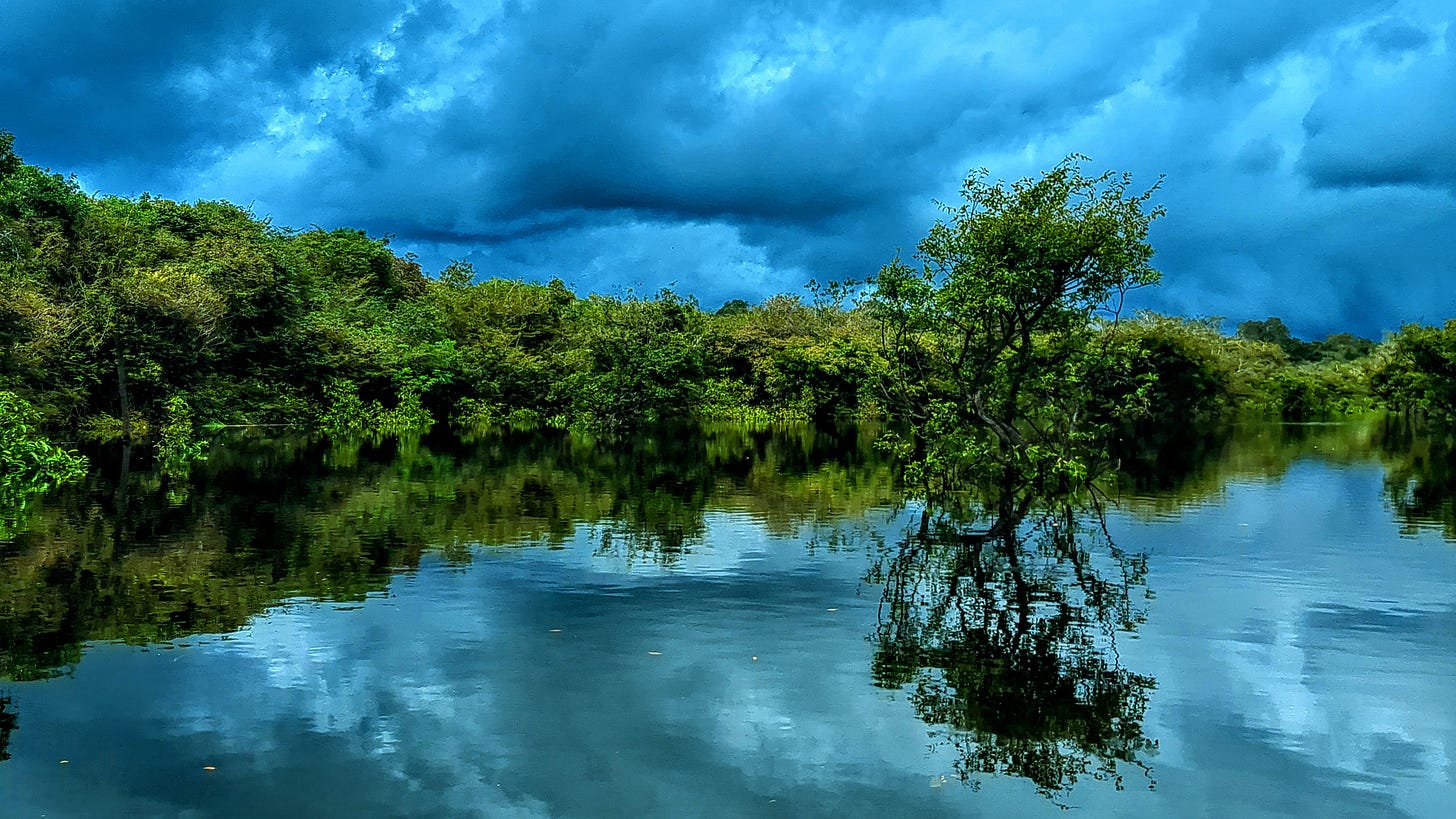
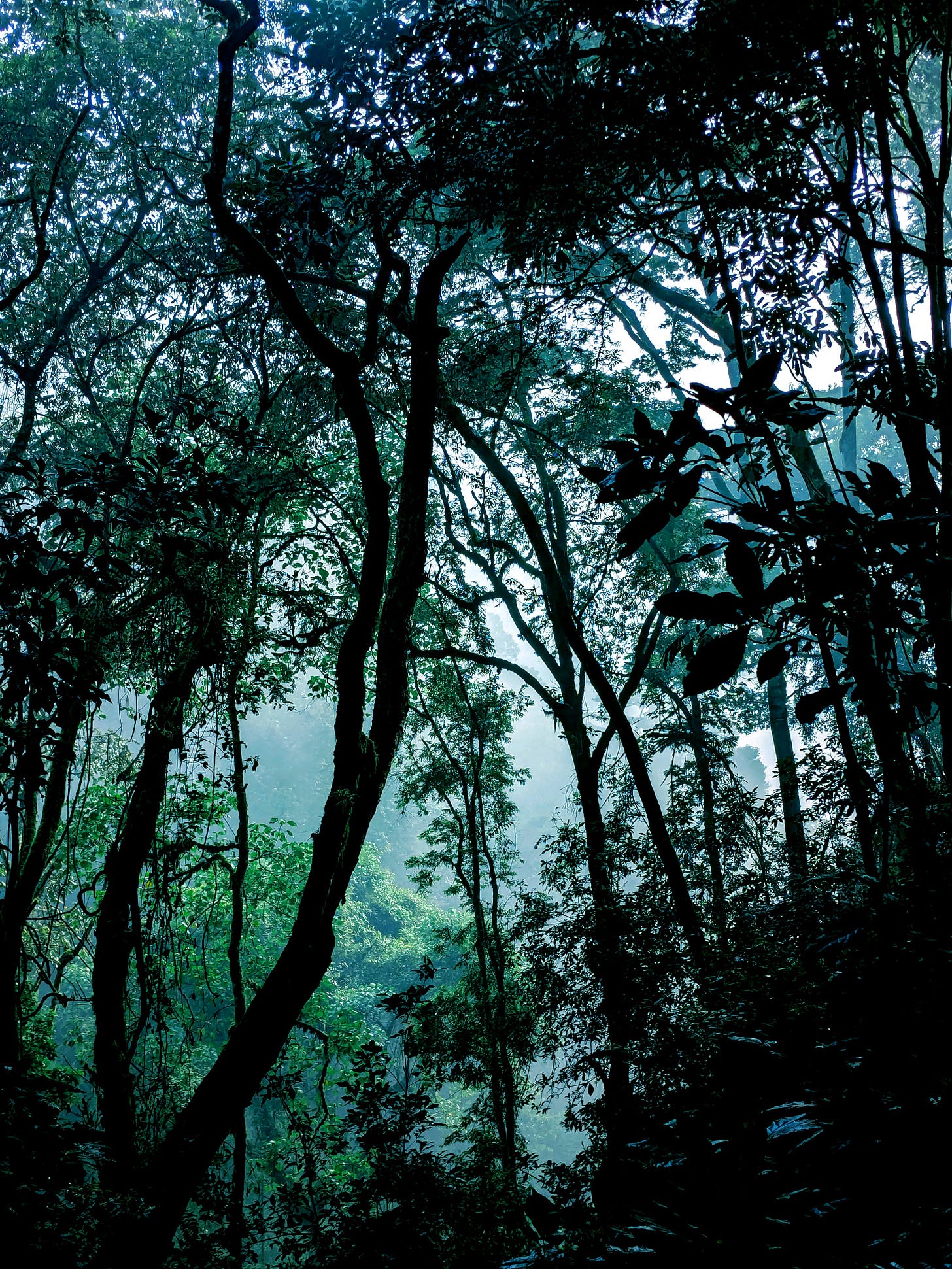
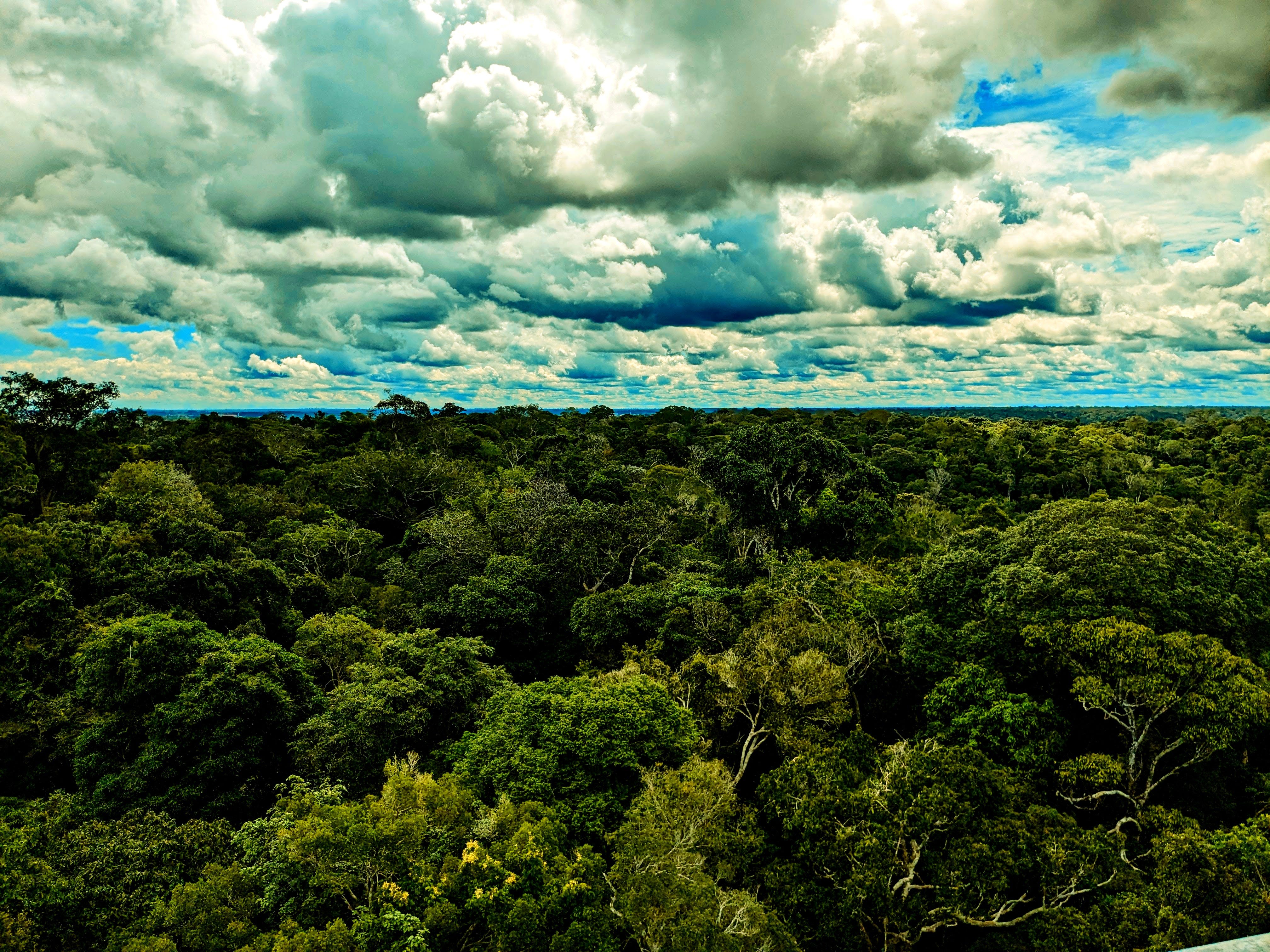
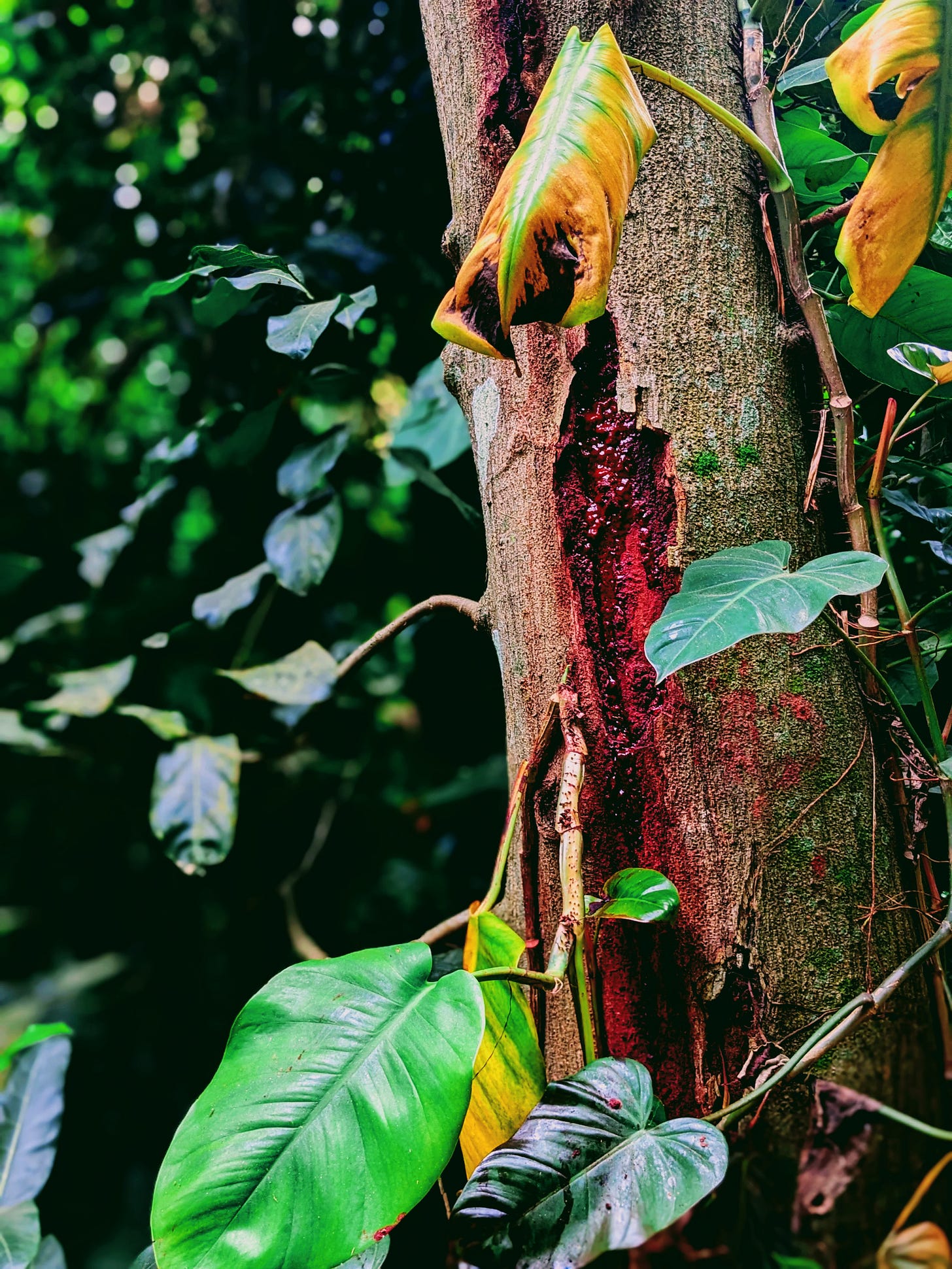

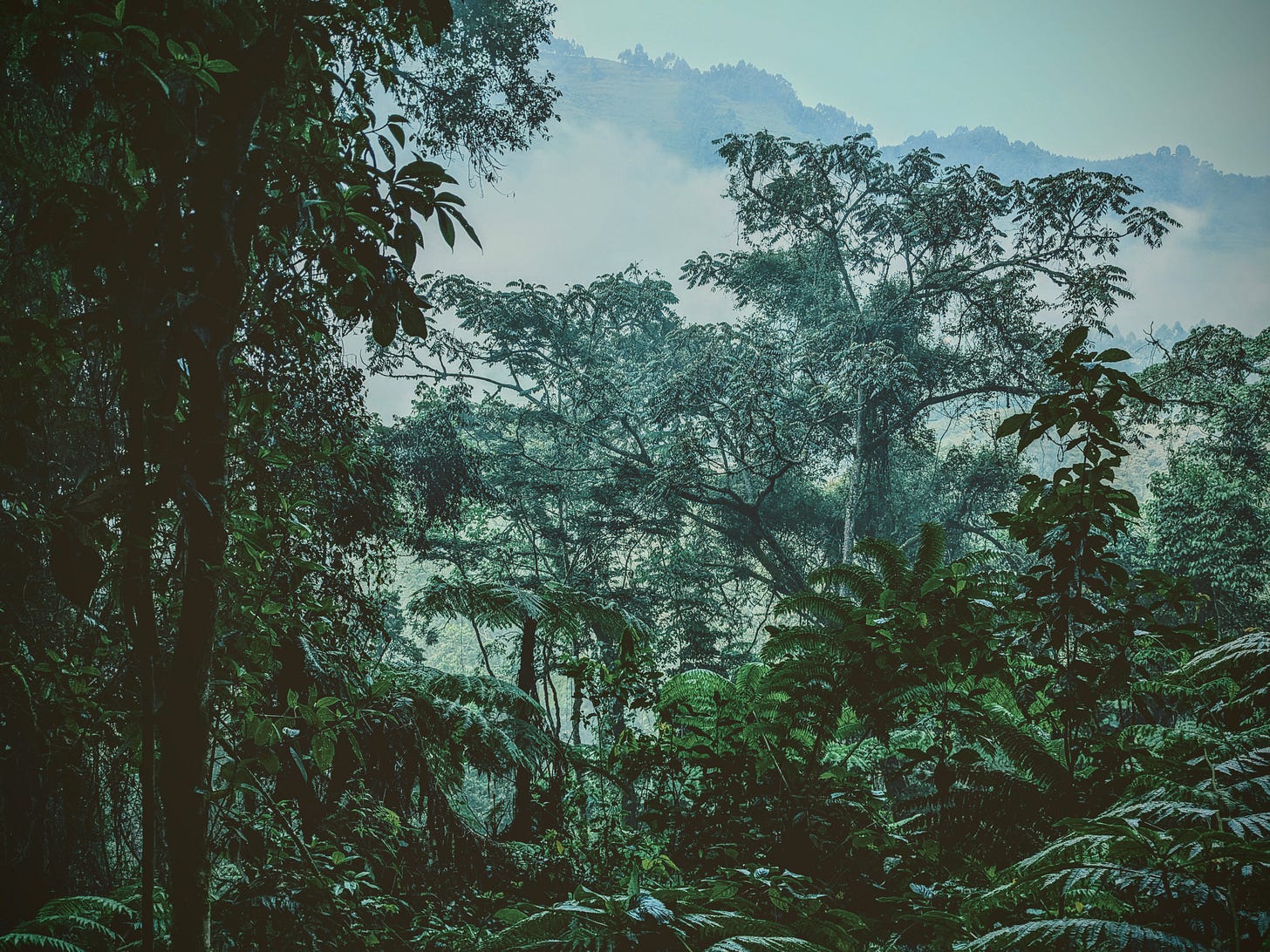
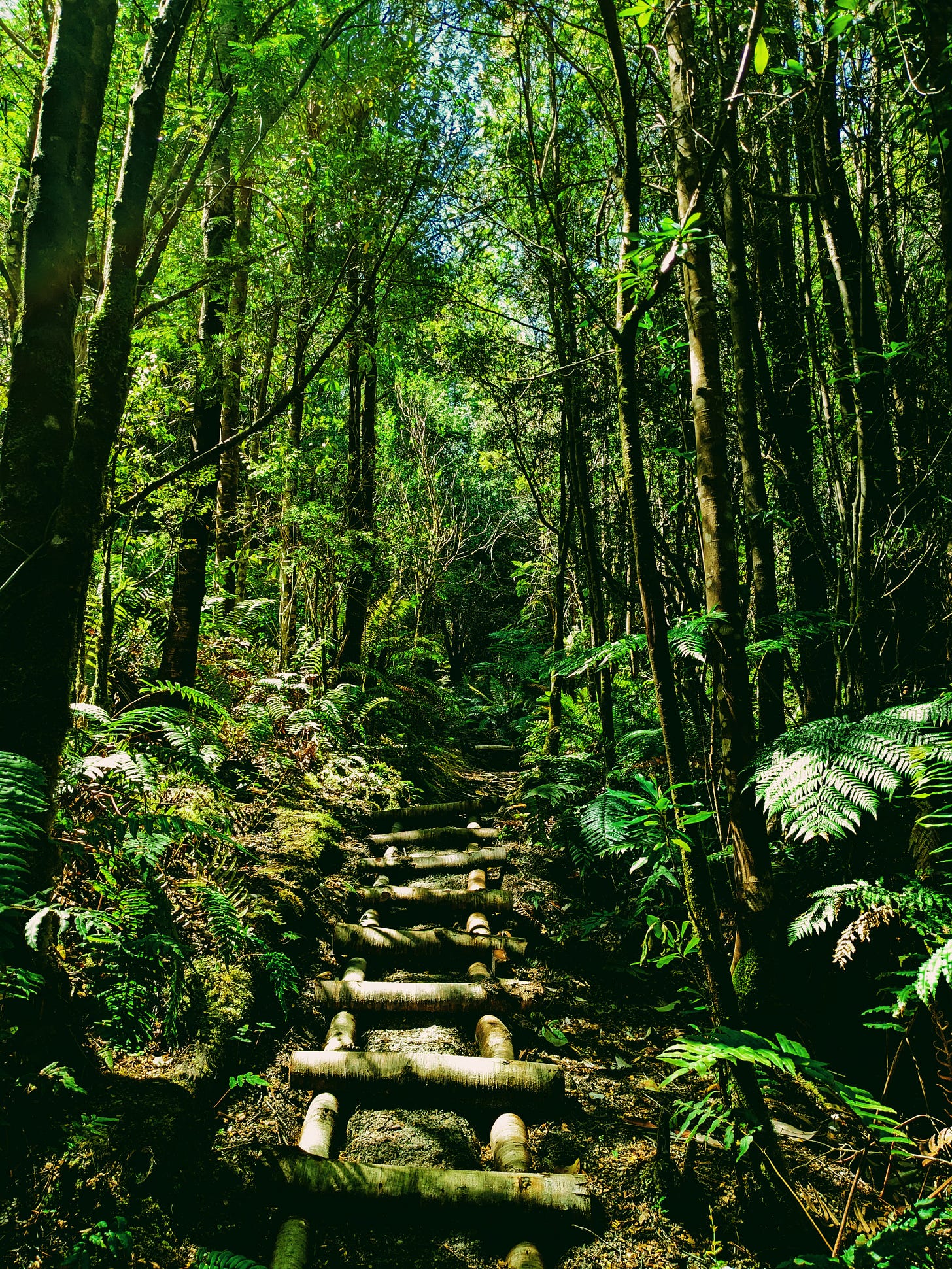

Your best piece yet! Definitely going to read that book about McIntyre.